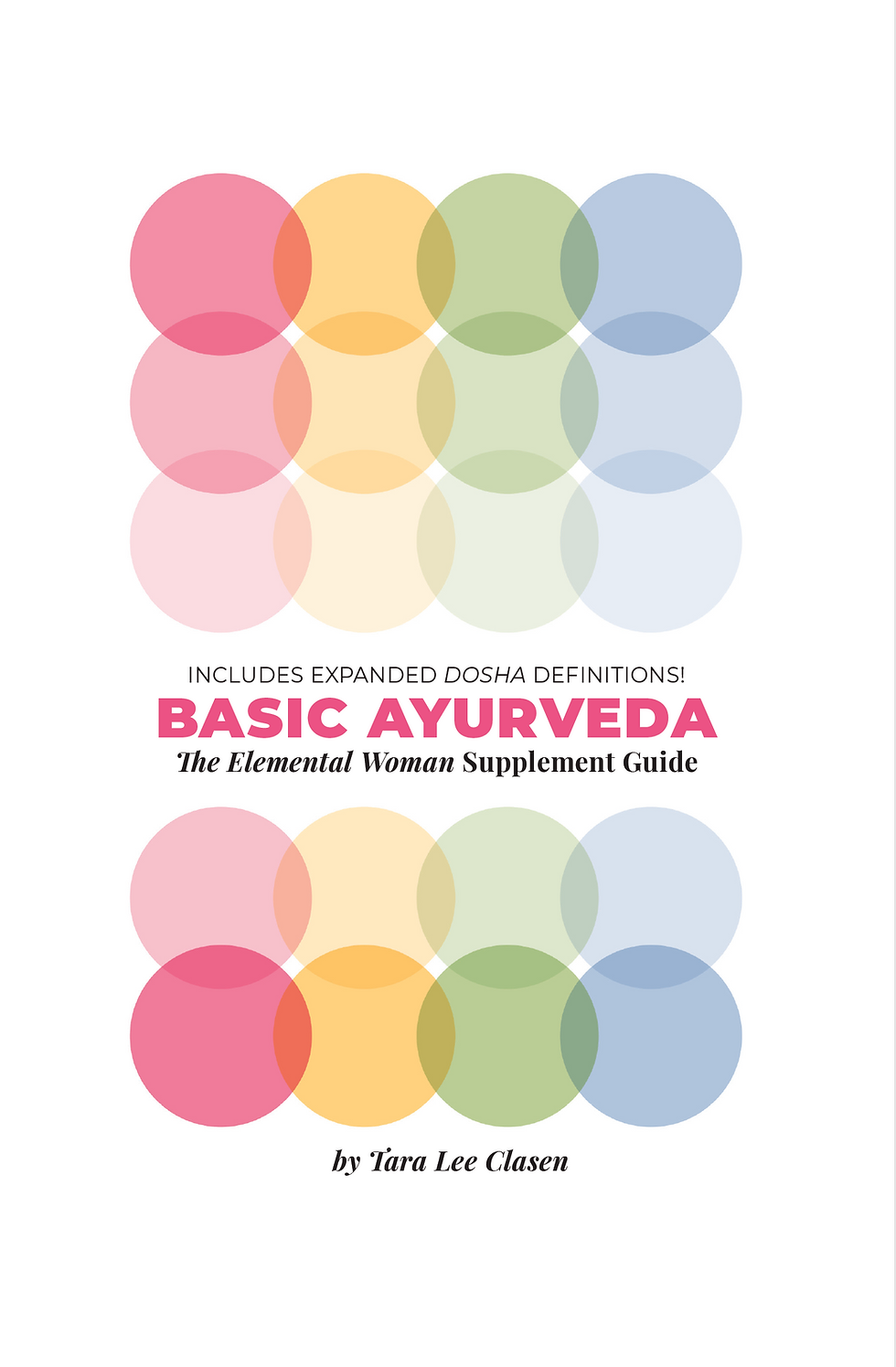The Kegel Myth. Could Kegels Be Hurting Your Pelvic Floor?
- Tara Lee Clasen

- Dec 5, 2023
- 6 min read
Updated: Jan 4

We are a culture obsessed with strength. Only our culture’s limited perception of strength often harms our physical structure.
Let’s say a woman has low back pain. This pain could range from mildly nagging to moderate to severe and alter the quality of her life. Upon palpation, we could discover that her SI joint — that beautiful triangular-shaped bone at the end of her spine—is experiencing some stress. To ease her low back pain, we concentrate on stabilizing her SI joint by targeting the glute muscles in the lower body.
As we palpate the glute muscles, and with only the weight of a fingertip, she may wince in pain. As we talk and I would explain that the area is hypertonic, or in a chronic state of contraction, tight and tense, with a lack of blood flow, and a nervous system that is communicating stress. I can’t tell you how many women in this situation then reply, “Well, isn’t having a tight butt a good thing?” We laugh, and I explain that isn’t necessarily the case.
Muscles need strength. But they also need softness. Buoyancy. Muscles should feel lubricated, easily sliding and gliding past one another. To achieve an optimal state of being, it is important to talk about buoyancy and slide and glide as much as strength.
Your lower back is full of sensory nerve endings. Your body developed in this way because it cares about how you feel. This might seem like a tangent, but it is important to always consider that our culture is obsessed with how we look, and it frames much of the knowledge about the body in terms of washboard abs and fitting into tight leggings, rather than focusing on how we actually feel.
Companies focus heavily on appearance and “preparing for swimsuit season” even when advertising products such as new herbal medicine. Yes, herbs could make us feel better, but it’s strange that the way this product is advertised is actually making us feel worse.
In discussions of fitness, even the word “strength” often secretly means that you will look better. And we all care about how we look. That is not the issue. I care about how I look. But I am not placing a value on that higher than how I feel. Your inner voice should not shout over your inner sensing of how you feel. In a truly healthy culture, the way we look extends to how we feel. We feel good, and we love our bodies as they take the shape of those feelings.
The optimal body does not have a certain appearance, but it is free of pain and nagging discomfort. And the inside mechanics of the body are absolutely fascinating, and so much more complex than “building strength” alone can fix.
Strength is not the answer. You need strength, but you must also balance it with relaxation, softness, and ease of movement. In the example above, a woman’s tight glute muscles were pulling on her SI joint, which was signaling to the sensory low back that there was stress, an immediate need to fix the mechanics that were going wrong. She mistook her tight glutes as necessary; she had never been told that strength needed to be balanced with softness.
Which Brings Us to The Kegel Myth
In a culture obsessed with strength, the answer to all things pelvic floor is Kegels. And yes, like all muscles, your pelvic floor needs to be strong. A quick Google search can find us a variety of ways to strengthen the pelvic floor. We can join group fitness classes in person or online that talk about engaging the pelvic floor with smart core strengthening exercises. Pilates, yoga, and barre classes are all fitness choices that create pelvic floor strength.
And yet, most pelvic floor issues result from tension and tightness. Pelvic floor muscles with trigger points (heightened zones of electrical activity) that are pulling on the structures above. A tight pelvic floor also pulls on the SI joint, causing low back pain. A tight pelvic floor pulls on the bladder, and it causes a lack of blood flow and alters the nervous system, causing bladder leakage and varied types of pain. Women may describe burning around the bladder, sharp bladder sensations, or feelings of bladder infection without the presence of infection. Or because of a tight pelvic floor stressing the bladder, actual infections may come and go (more on this in another post).
Here is the visual I often give in the office: Imagine a tight bicep. Think Popeye. When the bicep is tight and tense, the fibers pull together, interlocking and creating some degree of a “hypertonic bulge”. The muscle is chronically tight, unable to release and relax. Your brain knows things are going wrong; it tracks the bicep, and the brain is sending pain signals. Because the brain “does not feel safe” in this area of the body, your range of motion is decreased. As you go throughout your day, your body starts compensating, so now other muscles are being worked incorrectly or overused. In the future, you will feel more pain.
Now what if someone told you the way out of this bicep problem was through strength training? To lift weights. To take a muscle whose fibers are already in a state of tension, a muscle whose fibers are pulled tight together, and crunch them together even more? That seems counterintuitive, doesn’t it? And yet, that is the blanket advice we give women experiencing pelvic floor related tension or illness such as bladder leakage. And yes, I am labeling bladder leakage as an illness because, well...it is. Bladder leakage is a sign of being unwell, and if left unheeded, the symptoms can worsen. What started as “just some bladder leakage” can become a lot of bladder leakage, pain with vaginal insertion, or eventually prolapse.
Kegel’s are not personalized advice. It’s a one-size-fits-all approach to pelvic floor health that leaves many women worse off than when they started. For many women, they will tighten an area that needs relaxation. One side of some women’s pelvic floor can be tight, while the other is weak. Chronic tension can “burn out” the pelvic floor, making it weak. Some women may have bladder leakage and a tight pelvic floor and then do Kelgels and increase the tension to the point where the bladder is now held so tight that bladder leakage stops but urine retention begins. Just doing Kegels—without understanding your individual needs or even just broadly understanding what creates holistic neuromuscular health— can increase tension in a way that causes long-term issues.
Be calm. Don’t worry. Stress is not a friend to the pelvic floor ;) Another blog post will soon explain more about what you should do to create a healthy pelvic floor structure. In the meantime, just explore what strength means to you. Your mind is not separate from any part of your physical body, and having a conversation with tense muscles is a powerful form of healing. Ask yourself, is it possible that my pelvic floor is tight? How can I slowly teach the area to soften using my mind and breath?
Remind yourself that tension does not provide strength. That you can let go. The act of allowing yourself to become soft is an act of growth, and for many women, cultivating emotional and spiritual strength is the ultimate act of long-term pelvic floor healing.
All is changeable. All is changing.
Peace & Love,
Tara
Want to Know More?
I have more posts coming soon, including detailed posts on stretching the scalene muscles.
Check out my books on health and wellness!

The Elemental Woman
A Conversation for the Modern Western Woman Inspired by the Healing Wisdom of the Ancient Eastern Sage

Food & Mood Journal
A tracking guide to connect the food you eat, the emotions you feel, and increase the feeling of deep self-love

Mindful Movement Journal
A tracking guide to connect the motions you make, the emotions you feel, and increase the feeling of deep self-love
Basic Ayurveda
The Elemental Woman Supplement Guide
About the author:
Since 2004, Tara Lee Clasen has been assisting women on their healing adventures. As a woman-focused physical medicine provider, also trained in Eastern medicine, she knows transformation is possible and knows that with reflection and self-love, your future is full of bright possibilities.
#mindfuljournal #foodandmood #mindfullness #affrimations #positiveaffrimations #selflove #womenshealth #womenshealthbook #tmjpain #tmj #neckpain #shoulderpain #ribpain #chronicpain #jawpain #headaches #migraine #whiplash #asthma #vagusnerve #massagetherapy #manualtherapy #chiropratic
#nobotox #womenshealth #digestivehealth #holistic #spiritualhealth #pelvicfloor #pelvicfloortherapy #pelvicbowl #pelvicfloorexercise #pelvicfloorpain #pelvicfloorpt










Comments